Projects.
On this page, we describe some of our projects as examples to give you an insight into our daily work and to show you which core tasks our customers entrust to us.
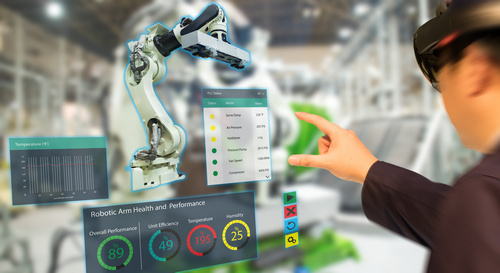
Software solution with PLC communication and control of a complex production machine
Development of modular real-time software for controlling all device modules with PLC and TCP/IP communication, database connection, GUI, and central process coordination for stable production processes.
Client: International machine manufacturer
Techniques:
C#, C++, WPF, Visual Studio, Git, TCP/IP, OPCUA, PLC, Azure Devops, Jira, Confluence, Scrum
- read more
We developed a powerful software solution for a complex production machine for a leading international machine manufacturer.
The machine has a transport unit that guides products through various modules integrated into the system. These modules perform various tasks such as modification, labeling, and high-precision quality analysis of the products.Lasers, scanners, cameras, label printers, and chip programming units are among the equipment used. Each of these devices is controlled by its own software module, which performs specific functions, checks, and processes depending on the product type and production speed.
Communication between the machine and devices takes place via common industrial interfaces such as PLC (Beckhoff TwinCAT), TCP/IP, and other established protocols.
A central control module coordinates all processes, ensures optimal cooperation between the individual components, and guarantees smooth production.All software runs in real time and uses a specially designed real-time operating system. A connected database is integrated for configuration and data management.
An intuitive GUI on the central terminal gives the operator a constant overview of the product status, potential errors, and all relevant configuration options.We took care of the entire software development process for the customer, from requirements management to software architecture, implementation, and deployment to testing and quality assurance.
The project lasted around a year and was implemented by an interdisciplinary team of six experienced developers.
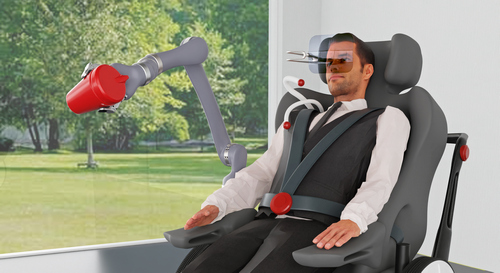
HIRAC - Hardware Independent Robotic Assistance Controller
Project management and software development for our new research project.
Client: ZIM
Techniques: Python, ROS2, Deep Learning, Reinforcement Learning, VS Code, Linux, Webinterface and others
- read more
We are pleased to present our new research project: HIRAC - Hardware Independent Robotic Assistance Controller. Cadida Software, in collaboration with the University of Applied Sciences Offenburg, has initiated this exciting project to sustainably improve the quality of life of persons with total body paralysis and persons with Locked-In Syndrome.
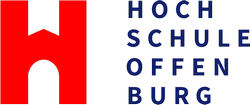
Totally paralyzed individuals and patients with locked-in syndrome face significant challenges in everyday life. Even basic actions such as reaching for a glass of water are often out of their reach. The limited ability to speak also makes it difficult to use voice-controlled devices. The HIRAC project aims to help these people while relieving the burden on caregivers.
The vision is to develop an assistance system consisting of artificial intelligence (AI), eye tracking control of the wheelchair, a gripper arm on the wheelchair and voice output. This system is intended to enable persons with total body paralysis to perform everyday tasks independently and significantly improve their quality of life.
The development of such an assistance system requires complex technical solutions. In particular, it is crucial to develop a component that is compatible with and can control commercially available wheelchairs, robotic arms, gripping mechanisms and eye tracking glasses. This component is called HIRAC (Hardware Independent Robotic Assistance Controller).
Our task is to develop this hardware-independent middleware that can solve the robot grasping tasks. This middleware integrates a powerful AI that merges and controls eye tracking control, image processing, sensor feedback and object manipulation. In doing so, HIRAC is designed to have a wide range of applications not only in the social sector, but also in industry. HIRAC relies on current machine learning methods, in particular Deep Learning and Reinforcement Learning.
In addition, Cadida develops the software framework that integrates the various components such as user interface, robot control, AI, etc. We rely on valued solution in the robotics domain such as ROS2.
We are proud to be able to work on this groundbreaking project with the support of the Central Innovation Program for SMEs (ZIM). This funding will allow us to move full steam ahead with the development and implementation of HIRAC.
We are confident that HIRAC will make a significant contribution to improving the quality of life of persons with total body paralysis and persons with Locked-In Syndrome. We look forward to the challenges and opportunities this project will bring and will keep you informed of our progress.
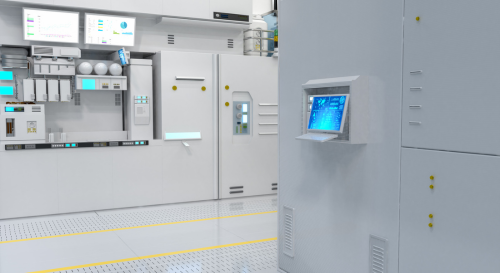
Revit Add-In for Exporting Project Data
Software development of a customized Revit add-in for efficient and flexible design of project data export
Client: Worldwide leader in the laboratory technology industry
Techniques: Revit, C#, WPF, Visual Studio
- read more
The add-in analyzes the layout and structure of laboratories as Revit projects and enables the targeted export of specific types, such as families and categories of special laboratory equipment. Individual open projects (RVT files) as well as entire directories including subfolders can be processed.
Special features of the solution:
- Flexible export formats: Export can be performed in various formats, including XML, PDF, JSON, and others.
- Customizable data structure: The layout and structure of the output XML and JSON files can be individually adapted to customer requirements.
- Automation and scalability: With the ability to process entire directories, the add-in is suitable for both individual projects and extensive data sets.
- Integration into the sales process: The application supports sales by being used in combination with a simulator. This allows specific customer requirements in the area of laboratory planning to be defined, visualized, and presented.This solution greatly facilitates communication between sales, planning, and customers and sustainably increases efficiency throughout the entire sales and planning process.

Telemedicine Software for People with Neurological Disorders
Project management and software development in the area of motion analysis and assessment
Client: Telemedicine company
Techniques: C#, WPF, Visual Studio 2019, Azure Kinect (3D camera system), Pose Tracking, Azure DevOps, Git
- read more
People with neurological disorders such as Parkinson's disease or multiple sclerosis benefit from regular and accurate assessment of their motor symptoms to evaluate disease progression and adjust therapy. We transfer standard clinical assessments to the patient's home environment by offering specialized software. The software automatically performs a variety of motor assessments, visually analyzes whole-body movement in 3D, and then provides diagnostic parameters to the treating physician or therapist.
The customer is about to enter the market with an existing telemedicine solution in C#/WPF. Further requirements of the healthcare market and the software prompted him to quickly purchase additional development and project management capacity from us.
Due to the regulatory requirements in the medical context, our employees were trained and closely involved in the processes at the customer. The previous knowledge in the field of medical software development and sensor technology, which our employees brought with them, was of great advantage here.Despite the special requirements, the development work on this project, which is very interesting both technically and in terms of content, is going very well. We expect this innovative telemedical solution to soon be made available to many patients.
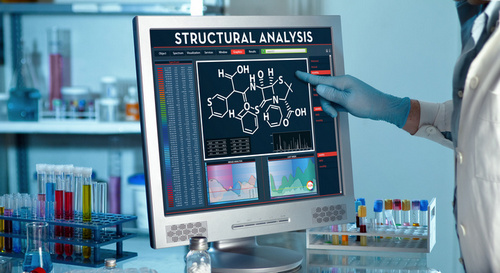
BMBF Research Project for a Novel Readout Device for digital PCR
Software development for a novel device.
Customer: BMBF
Techniques: C#, WPF, Visual Studio 2019, Entity Framework, Scrum, Jira, Git, OpenCV.
- read more
Cadida was awarded the project at the end of 2020. The development will take place over 3 years in collaboration with 5 collaborative partners consisting of a research foundation, a university and several industrial companies.
This device will allow samples to be analyzed for the presence of specific DNA sequences much more quickly, easily and with greater complexity. For example, the application could test blood samples for the presence of cancer DNA or food samples such as corn for the presence of genetically engineered (GMO) components.
Specifically, our tasks include computer-aided analysis and visualization of the data, creation of the user interface, camera and LED control, image acquisition, image analysis, and presentation of results.
Cadida is also responsible for the design and implementation of the software architecture, data models and interfaces. It develops user stories (use cases) and provides automated tests to verify them to ensure the requirements are met in detail.
We are looking forward to this exciting project, which started in February 2021.
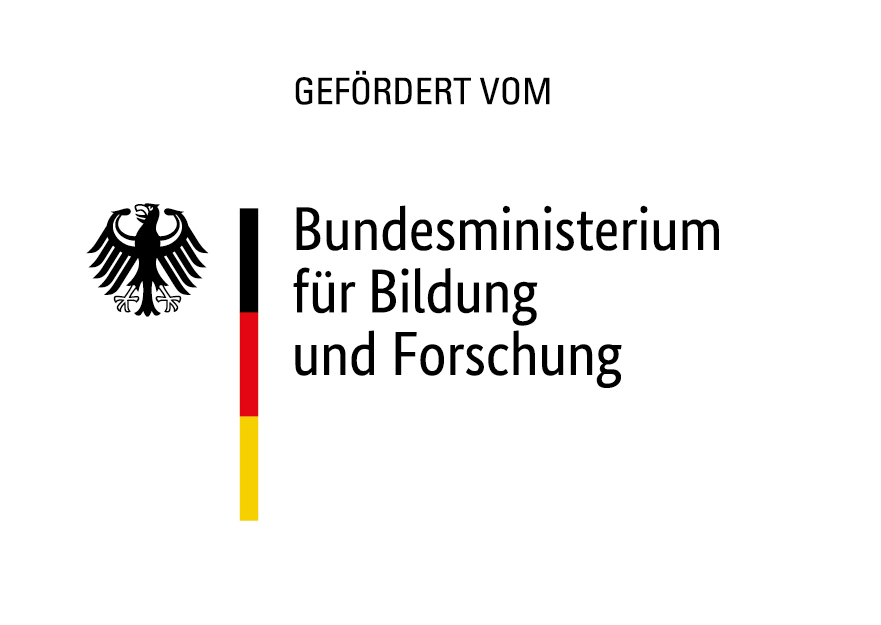
Collaborative Project: Frequency Domain Multichannel Deconvolution for Marker Discrimination in Digital Multiplex Assays (FREEDOM) – Subproject: Design and implementation of the software architecture.
FKZ: 13N15287
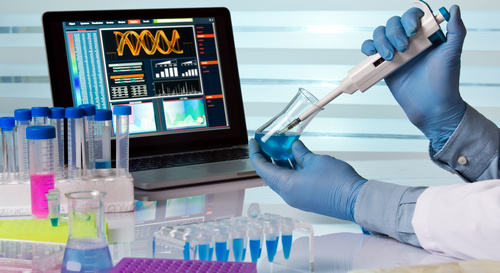
Modernization for Measuring Device Software
Software development in the area of modernization and porting of an extensive software for measuring instruments.
Customer: Measuring device manufacturer
Techniques: C#, WPF, Visual Studio 2019, Delphi, MariaDB, Entity Framework, Scrum, Jira, Git a.o.
- read more
Our customer had been developing their own software using Delphi for decades. It became time to modernize it and port it from Delphi. This was preceded by consulting, planning, and on-site training to get the entire team up to speed and trained in the new technologies.
As part of the consultation, there was also the question of which new technologies to use. The goals and options were contrasted and prototypes were used to show what this might look like in order to come to a decision.
10 people are involved in the agile development and are paving the way into the future for our customer. The new software is already in use internally and pleases both measurement engineers and sales. It will be available to all end customers once our work is completed.

Graphical Evaluation in Accounting
New development of a software program in accounting with special graphical evaluation.
Customer: CEO in a company
Techniques: SQL server, C#, WPF, Visual Studio 2019, Scrum, Jira, Git a.o.
- read more
Special accounting processes that the customer was unable to map in his ERP and DMS system prompted him to have us develop a custom software solution. This included invoicing, evaluation, graphical evaluation, and rights management.
It was particularly important to our customer to have a software solution delivered in just a few weeks using the given techniques in order to introduce the new software on time at the turn of the year. It was important to react quickly to changes in the CEO's specifications and to make the processes clear and simple.

Diagnostic System
Software consulting, concept development and new development of a diagnosis and calibration system.
Customer: Laboratory technology
Techniques: C#, WPF, Visual Studio 2019, Scrum, Jira, Git et al.
- read more
Our customer invests a high degree of effort in the testing and calibration of laboratory technology equipment. Cadida has developed him a software with which he can perform the calibration very easily. It also allows automatic and manual testing, resulting in accelerated deliveries with higher quality. In terms of international support, our customer also benefits from the fact that he can use this software worldwide and it provides him with important data on the device and its components.

Performance Improvement CAD System
Performance measurement, software consulting, concept development and software optimization to improve the performance of a CAD system.
Customer: Electrical industry
Techniques: C#, Visual Studio 2017, TFS and others.
- read more
The project started with a detailed performance analysis of the CAD system, which had been developed by the customer for decades. Cadida Software uncovered the weaknesses of this CAD system. We then took over the concept and optimization planning for the remediation and acceleration of the software and developed the software solutions for the customer.
The implemented performance improvements enable the customer and its users to work more efficiently with their software. In addition, the client is able to attract another audience with more sophisticated and larger CAD drawings and data volumes.

Platform-independent Cloud Solution for IOS, Android and Windows
Software development of an app for a large German mechanical engineering group that can offer its business data on various operating systems to its employees via the cloud.
Client: Large German corporation
Techniques: C#, Xamarin, Visual Studio 2017, TFS, Cadida Report, 2D/3D diagrams, server technologies and databases.
- read more
For management and sales, business data can be managed, evaluated, and graphically visualized with an app. We have developed an app for this company that is supported by the iPad, Android and Microsoft Surface tablets. Soon they will also be supported by smartphones for iOS and Android (iPhone and Samsung).
The planning started with a feasibility analysis, ergonomics study and detailed specification. The requirements were included in this specification and user guidance and processes were simulated in advance. The development was implemented with Xamarin and Cadida libraries were used to achieve an optimal graphical evaluation. The data is connected to a corporate database and the cloud, protected from external access and encrypted with a security concept.
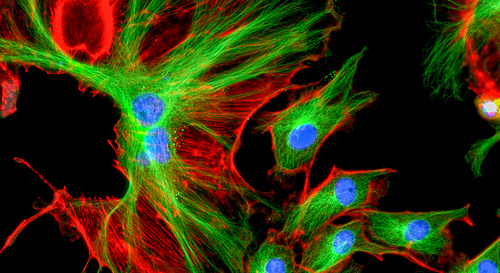
Fluorescence in Laboratory Technology
Software integration of a fluorescence camera and control of a laser to extend the functionality of a laboratory device.
Customer: Laboratory technology manufacturer
Techniques: C#, WPF, MVVM, Visual Studio 2017, OpenCV, emgu, Git
- read more
To extend a laboratory instrument with the ability to analyze fluorescent cells, we implement for our customer the connection of a fluorescence camera and a laser that triggers the cells to fluoresce using irradiation.
The calibration and image processing algorithms we use here make it possible to obtain more precise information about the nature of a cell sample or a single cell, which is an important component in the planning and execution of test series in the field of pharmacological research.
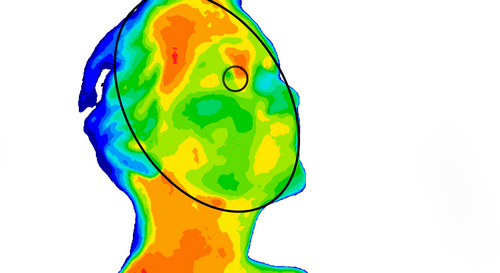
Face Recognition via Machine Learning
Software consulting and software development of algorithms for face recognition. Investigation of different algorithms and neural networks for the recognition of faces in photos and videos.
Client: Camera manufacturer
Techniques: C++, Visual Studio 2017, OpenCV, TFS a.o.
- read more
Preceded by a performance study to estimate which algorithms are the fastest for which cameras. Several neural networks (machine learning) were used and compared. The length of the learning depends on the quality.
Our customer develops cameras for infrared images. Up to now, there have been no suitable algorithms to reliably recognize faces in photos and videos. We developed a reliable solution, handed over extensive documentation, the learning files, and the code for further development.
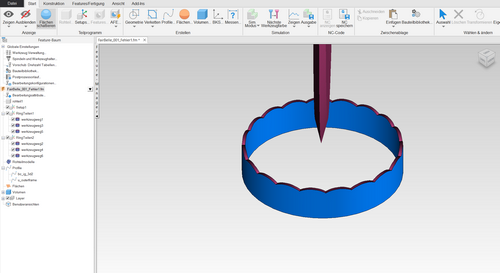
Software Development CAM for Precision Machines
Development on the in-house software for jewelry production: "Benzinger Creative". This special CAD/CAM system is used to design rings and other jewelry pieces and prepare them for production.
Customer: Carl Benzinger GmbH
Techniques: C#, Winform, Visual Studio, FeatureCAM 2017
- read more
The software can virtually mill, facet, engrave, stone set, and guilloche jewelry pieces. It offers many possibilities including facilitation in programming complicated patterns, defining tools and machining strategies, and subsequent NC program creation - even including real-time simulation.
We support the customer in optimizing the software in terms of performance, user-friendliness, and interface scope. We have already had great success, especially in accelerating the computing power. It is a lot of fun to be able to support this well-known customer in the further development of their software.

Software Development in the field of Cancer Research
Software analysis, software consulting and software development of existing software. Analysis of the software, setup of the environment, quick help and quality improvement for planned production start.
Customer: Laboratory technology company
Techniques: C#, WPF, Visual Studio 2017, OpenCV, Git and many others.
- read more
Since November 2017, we have been developing software for the laboratory technology division, which is used for laboratory equipment for cancer research and immune research.
Our customer develops lab equipment and makes the necessary software for it themselves. They asked us to optimize and expand the software. As the sales of the equipment expanded and our customer wants to concentrate on the core business, we would like to help him. The focus is on quality enhancement as well as user interface and image processing enhancements.
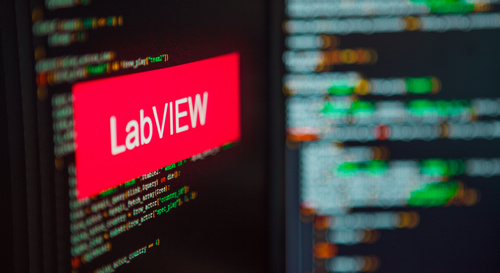
Software Analysis and Unit Tests with LabVIEW
LabVIEW analysis and LabVIEW unit tests for quality control and assurance.
Customer: Measurement equipment manufacturer
Techniques: LabVIEW, LabVIEW-UNITTEST
- read more
For a measurement device manufacturer, we analyzed their LabVIEW development and performed UnitTests to ensure quality assurance.
The LabVIEW program has grown for many years and is accordingly extensive and deeply nested. The project began with an analysis of the LabVIEW VIs and an investigation of possible weak points. Our team developed unit tests with LabVIEW-UNITTEST. These are automatically executed to ensure quality and check code changes to the LabVIEW VIs. Specifically, risk areas were identified and memory leaks were located to advance repairs.
Our customer was thus able to ensure the continuous operation of measurements.

Software Development of Addons for FeatureCAM
Software development of extensive addons for FeatureCAM for automations. Analysis of the software and its concepts. Extensions, maintenance and new development of the addons.
Customer: Mechanical engineering supplier
Techniques: C#, WinForm, WPF, Visual Studio FeatureCAM
- read more
We are proud to have been supporting a customer in the field of CAM since fall 2016. He has been developing software solutions, implementing them and training their employees for two decades for his end customers in the fields of mechanical engineering, jewelry and more.
In the future, our customer will focus on sales and training of the products and has entrusted the development of the software solutions to Cadida Software, which will support him in the long term.
Here we work on various addons for FeatureCAM, accompany a new product to market and support existing products by extending and maintaining them. In the near future we will redesign the user interface and the program structure.
We are looking forward to accompany this exciting project and this pleasant client for many years to come.

Takeover of the Software Product Development
Product development of a comprehensive profile-oriented user interface with integrated CAD visualization. Setup, documentation, design, graphics, and embedded CAD component (CAD editor control).
Client: International building construction supplier
Techniques: C#, WPF, MVVM, Visual Studio, Reports, XPS, WIX, automated system tests.
- read more
For a new customer, we took over their software product development so that they can focus on their expertise. In the first step, this was a new development of the software that many of his end customers will use.
In a user interface study, our know-how in the field of ergonomics and usability of user interfaces was incorporated right at the beginning. Taking into account support observations and end-user requests, a collection of sketches was created, which helped to comprehensively design the final product and realize it in a very short time.
The calculation core came from the customer and bundled his expertise in mathematical calculations, which we visualized in the user interface and an intuitive CAD representation.
Both the context-sensitive help and the simple setup, as well as the wizard-oriented approach help the newcomer to use the product. With the definition of user profiles, the modern operation for the expert, as well as a classic design for the regular customers, makes it possible to recognize the product.
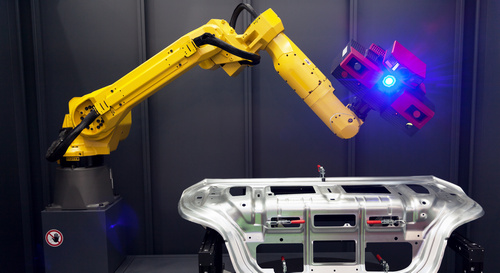
Research Project in the field of Image Processing and Display in 3D Space
Software development for image enhancement and consulting on CAD topics.
Customer: International sensor manufacturer
Techniques: C#, WPF, Visual Studio, UnitTests and MATLAB
- read more
For our long-term customer, whom we have been privileged to support for many years, we are developing in a research or pre-production project. This is about image enhancement of stereoscopic image recordings. These are processed in real time for the end user. This is primarily about image enhancement.
Both the algorithms are tested with MATLAB before they are used in C#, the performance is closely examined and performant solutions are searched for.
As consultants for CAD applications, we were also able to give our customers an insight into how extensive special requests for CAD systems can be, thus saving them from an excessive amount of work.
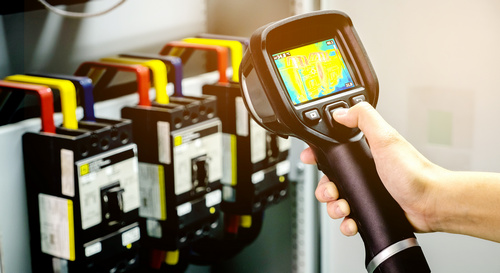
Porting and Modernization of an Image Processing Library
Programming of a company standard library for image processing and various applications.
Customer: Measuring device manufacturer from the region
Techniques: C++, OpenCV, CMake, Google Unit Test, Visual Studio and Git/TFS
- Read more
For a measuring device manufacturer from the region, from whom we have repeatedly received an order, we port and modernize their standard library. This is to be used company-wide for a variety of devices and quasi-internal standard library for applications and especially for image processing.
With our team having gained experience in image processing over the last few years, especially in the structural design of standard libraries, this is a good opportunity to provide the customer's staff with a suitable tool.
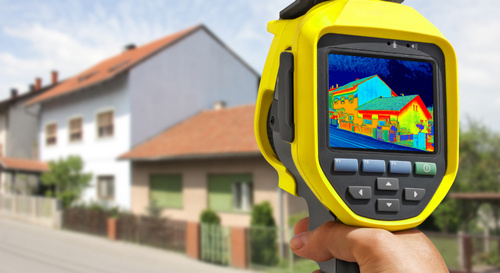
LabVIEW Interface for modern Thermal Imaging Cameras
Programming of LabVIEW interfaces for thermal imaging cameras (parameter exchange, real-time streaming and control of thermal imaging cameras) with LabVIEW. Development of block diagrams and the user interface in LabVIEW allows for comprehensive control of the camera for the end user as well as support in research and development.
Customer: Major international measurement equipment manufacturer.
Techniques: LabVIEW, C++, CMake, Google Unit Test, Visual Studio and TFS.
- read more
An international measurement equipment corporation needed our expertise to interface their thermal imaging cameras with LabVIEW. They were looking for a quality solution that would allow them to connect their equipment to the graphical programming system and achieve licensing by National Instruments, the manufacturer of LabVIEW.
The project started with consulting on LabVIEW, device drivers, interfaces, and licensing. We performed the software architecture design, programming, extensive unit and system testing, and regularly demonstrated progress.
The LabVIEW device driver for the infrared thermography cameras is now responsible for parameter exchange as well as real-time streaming and control of the cameras. The LabVIEW end user can now see the many options for device control on the user interface, as well as the analysis of the measurement data. We have been able to realize this through several examples, some straightforward and others more extensive. Extensive documentation makes the LabVIEW user's introduction to the product and device palatable and easy.
The extensive system tests included several thermal imaging cameras for different versions of LabVIEW and resulted in over a thousand test cases for close examination, where the quality of the manufacturer's core device drivers could also be improved. Unit tests of the interface programmed in C++ were created and tested for each function and parameter, and were able to log both limit and timeout violations.

Porting and Modernization of a large AutoCAD Addon for Structural and Civil Engineering
Modernization, optimization and porting of a large existing AutoCAD add-on. Extensive code that has grown over the last 12 years and is now being renewed and restructured by us. Porting of the AutoCAD addon from ObjectARX to ARX.NET and BricsCAD.
Client: CAD provider
Techniques: AutoCAD, AutoCAD Civil, BricsCAD, AutoCAD .NET API (ARX.NET), ObjectARX, C#, C++, MFC, COM, Visual Studio 2013, TFS and UML.
- read more
As a B2B software service provider, we used our experience in CAD to modernize a software that had grown over 12 years. Our client, itself a large software company, developed this addon for AutoCAD and Civil for structural and civil engineering.
Several hundred thousand lines of code were ported and modernized from C++ (COM, MFC, and ObjectARX) to C# (WinForm, AutoCAD's API). This was preceded by a feasibility study and financial calculation for this large project. In the financial calculation, we showed how the development effort with C++ for AutoCAD addons will behave over the next few years due to high migration efforts and in what timeframe the porting to a modern programming language will pay for itself.
The porting concerned the user interface with main and context menu, ribbon, property window, commands and dialogs. The CAD part contained CAD elements (entities), reactors, Xdata, and much more. On the way it was already noticeable that the program code became shorter and simpler.
After the porting, a three-day training period was conducted to prepare the employees for the change to AutoCAD .NET API with C#. Previously, they had already been trained by us for AutoCAD's ObjectARX and C++.
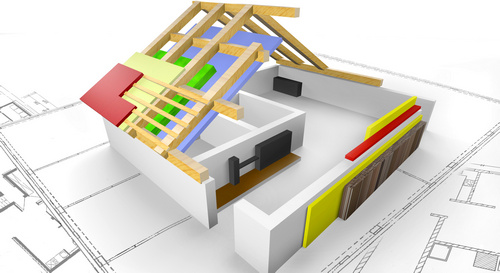
Process Optimization using Revit Addons for Architects
Development of new addons for Revit on the topics of families, views and filtering.
Client: Architect's office
Techniques: UML, Revit, Revit .NET API, C#, WPF, WinForm, Visual Studio, TFS.
- read more
We developed addons for Revit to make work easier for architectural firms.
These addons compensate for missing functionalities in Revit and facilitate the work processes of architects and CAD designers. According to the wishes and requirements of the customer, new ribbons were added.
In a family editor, all or (filtered) only some of the families of a project can now be displayed. These can be added to the drawings via drag & drop. In the view editor - for example on a second monitor - existing views can be listed and filtered. In the preview of the view management, the individual views can be adjusted directly.

Analysis and Management Program for Intranet and Cloud
Specification and software design for new development of a management program in the area of controlling and optimization. Desktop program with newly designed GUI, diagrams, reports, forms and tables in connection with SQL-Server or SQL-Express. Import from any data source and export to Excel.
Client: Consulting company for reinsurers.
Techniques: UML, WPF, C#, SQL, Linq, SQL Server, SQL Server Express, Visual Studio, TFS.
- read more
A consulting firm of reinsurers came to us to bundle their expertise into a software product. This was developed completely from scratch and has a particularly sophisticated design. Previously, the customer had already made their own attempts with Excel and Access and also hired a Bulgarian software company to undertake developments. However, this did not lead to success.
Cadida Software initially stepped in as a consultant and was able to present technical solutions. Later, at the request of the client, we undertook financial planning, which also enabled development in Germany. Due to the high demands on the design of the user interface, reports, statistics and user operation, individual controls (WPF controls) had to be developed.
The system has a central database on the intranet or in the cloud and is based on an SQL server. Our customer distributes the software to its end customers. It allows the end customers to retrieve and evaluate an overview of their product and personnel at any time. An ordering system makes it particularly easy to order specialist analyses on a regular basis.

3D Scanner/ Sensor Technology Object Recognition and Classification
Software development for the recognition of the real volume and convex hulls of objects by 3D scanners. Sensor technology and 2D/3D graphics for measurement, object recognition and calibration of laser. Development of algorithms for above mentioned areas. In detail: rotating calibers, minimal bounding box, ransac, eigenvalue calculation and others. Pre-calculation and testing of algorithms with Matlab.
Customer: International sensor manufacturer.
Techniques: C++, Visual Studio, Matlab, OpenCV, PCL, Halcon, Eigen, UML, SVN, Blender, AutoCAD
- read more
For an international sensor manufacturer, we developed mathematical models and software algorithms for the evaluation of 3D scan data. For the evaluation, numerous filters were applied upstream to improve the calculations and optimize the output data.
The task was to recognize and classify objects from the 3D scan data (point cloud), i.e. the recognition of the geometric shape (cylinder, cuboid, sphere, etc.). A subsequent calculation of the volume brought the desired results with fast performance.
In the test phase, we installed the scanners at various positions in the laboratory, connected them to the embedded system and configured them. Data from a production plant was also used, to which the newly developed 3D scanners were pre-assembled. In order to produce an abundance of variants for the tests, we modeled a setup in 3D for a scan data simulation.
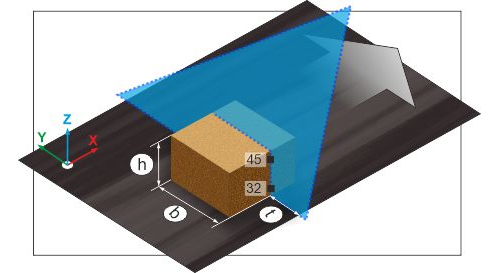
3D Scanner Calibration with Embedded System
Development of mathematical models for the calibration of 3D scanners and their embedded programming. Concept, setup and development for software for automatic calibration and adjustment of 3D scanners.
Customer: International sensor manufacturer.
Techniques: Matlab, OpenCV, PCL, Halcon, Eigen, Java for GUI, UML, SVN, Blender, AutoCAD.
- read more
For an international sensor manufacturer, we developed mathematical models and software algorithms for automatic calibration of 3D scanners. The goal of the project was to find a simple way to calibrate the scanners worldwide without using reference objects or measurement tools.
The existing calculations were transferred to Matlab and the setup of the industrial scanner was also recreated and simulated in Matlab. In the process, the scanners could be freely rotated in space to simulate any orientation. For the calculations, the formulas were first optimized in Matlab and then implemented with Java. The user interface was expanded, the operating steps minimized and the ergonomics improved. Our developments are now used worldwide.
For the tests, the scanners were installed at various positions in the laboratory, connected to the embedded system and configured. In a simulation that mimicked the production setup, scan data was generated and, after calibration, the calculated positions of the laser scanner were validated.
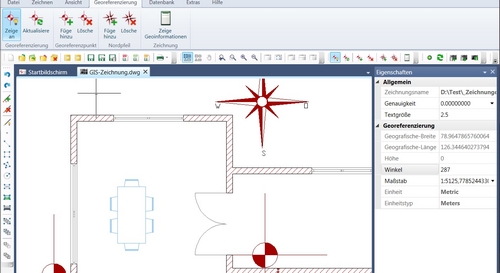
GIS System for the Calculation of Geodata in CAD Plans
Extension of our product GIS-CAD according to customer requirements and connection to their existing management system. Detailed specification of requirements and ongoing customer requests. Consulting for the implementation of software projects.
Client: Software company
Techniques: UML, Visual Studio, C#, WPF, TFS.
- read more
GIS-CAD is part of our own product range. With it, CAD plans can be opened and edited, and geodata can be determined for each individual object.
Our customer, themselves a software company, was looking for competence in the field of CAD and GIS. We extended our GIS system for them. This allows them to easily georeference drawings and, most importantly, connect them to their main system.
Numerous interactions between both software systems were implemented. Both the user interface and the external control of the GIS system were specially adapted to the customer's requirements. Thus, it is possible to navigate to and manipulate every single object in the drawing.
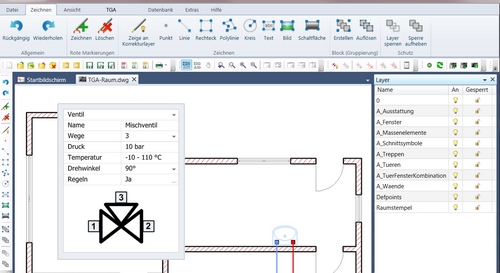
CAD Editor - Modular Designer
CAD editor - modular designer
Customer: TGA
Techniques: C#, .NET Framework 4.5, Visual Studio 2012, WPF, ActiPro, AutoCAD .NET API (ARX.NET), SQL Server, Team Foundation Server (TFS)

Web-CAD-Editor - CAD Plans for the Browser
Web-CAD-Editor with which 2D and 3D objects can be displayed and edited in CAD.
Client: Software vendor
Techniques: Windows server, IIS, Java script, HTML, jQuery
- read more
The target group is the simple user who can display data with the corresponding CAD plans and PDF documents via a search. In addition, data can be recorded and changes can be made to the CAD plans.
The display of DWG/DXF-based files is supported, which are optimized for high-performance display via the Internet. The browsers Firefox, Chrome and Internet Explorer can display the web application and also allow complex 3D operations to be executed or planned.




